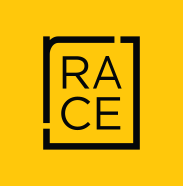Annual convention: parties organized with the intention of bringing together all those involved with the company, outside the work environment, in a relaxed atmosphere for better relations between everyone.
Box: a resource used to delimit the space of a supplementary text. It may contain extra information, a note or an observation.
Circular: it is a message addressed to a particular department or sector, aiming to pass on warnings and determine rules and orders.
Coffee with the President: an organized meeting between employees and the president of the company to exchange ideas, complaints and suggestions in order to a better relationship between people.
Communication cascade: it is a hierarchical communication process, where information is passed from one segment to another, and from top to bottom.
Corporate Blog: is a form of interaction with both internal and external stakeholders. It is a collaborative space that allows the exchange of information and submission of comments.
Endpoint: an icon representing an organization or entity, typically used in magazines to indicate the end of an article.
Employee listening channel (internal ombudsman, direct line): a space in the entities that receives criticism, complaints and suggestions from employees. It is an important space to intercede between the parties involved in order to avoid conflicts.
Face to face communication: it is the direct contact between employees and the head of a company.
Integrated communication: it seeks to combine issues from different divisions in a company with the purpose of structuring an effective communication plan integrating journalists, advertising, public relations, among other sectors.
Internal statements: they are made to disclose any important and specific information concerning all employees or only one group. They can be sent by email, published on the Intranet or even be placed on billboards.
Internal marketing (endomarketing): is a marketing strategy focused on the internal public. Its planning, in most cases, is done by the Human Resources of the company.
Internal event: regular events to gather all the employees of a company or specific groups. It aims the integration and the better relationship among all sectors.
Photo caption: explanatory text on a photo.
House Organ: it is theinternal communication channel in a company. Whether a newspaper or a magazine, it is important for the internal public of the organization to know everything that happens in their workplace. The articles are colder since it is usually bimonthly.
Intertitle: lower titles inserted throughout the text, allowing the text to become lighter and easier to read.
Intranet: it is a system of private networks in a company. All employees have a register and can access institutional news, specific contacts, useful phone numbers, among other services.
Wall journal: internal communication journal, normally fixed in areas with a lot of movement of people. It has several contributors, and brings relevant and highlighted information in the company. Its reports are factual, because the journal usually is biweekly.
Layout: a combination of graphic components that, when diagrammed, should form a harmonious set in a magazine, newspaper, poster, or newsletter. It is important that the layout of an entire statement is visually appropriate, because then it will carry a good impression on the staff.
Thin line: title complement that sums up the article in a few sentences.
Newsletter: it is an informative e-newsletter sent regularly to specific sectors in the company as a way of disseminating the latest important news, actions, contests or parties.
Eyeline: quote or phrase from the text that is highlighted in the page layout.
Reward program: an internal marketing action taken in order to increase employee productivity through rewards.
Social project: promoted by companies to encourage integration among the participating employees and strengthen support to a social cause.
Focal point: it is the employee who operates within a specific sector of the company, and most of the time is not from the communication department. Because it is an active person with the department colleagues, it takes the relevant information to the communications department of the company, information which often turns into interesting news in the house organ.
Pawn radio: it is an unofficial media that generates uncertain information and without confirmation.
Corporate social network: they are unique platforms, aimed at professionals to exchange information more conveniently and quickly.
Catchword: the first word located above the title in a layout, name given to a text identifying the subject of the article.
Results meeting: it happens regularly in order to align the positive and negative results produced by the company. It is important to strengthen the relationship between client and staff.
Subtitle: an additional title placed below the main title to implement it with more information.
Corporate TV/Radio: exclusive media used for internal communication. They are attractive channels for the publicity of the company, because of the use of audiovisual devices.



